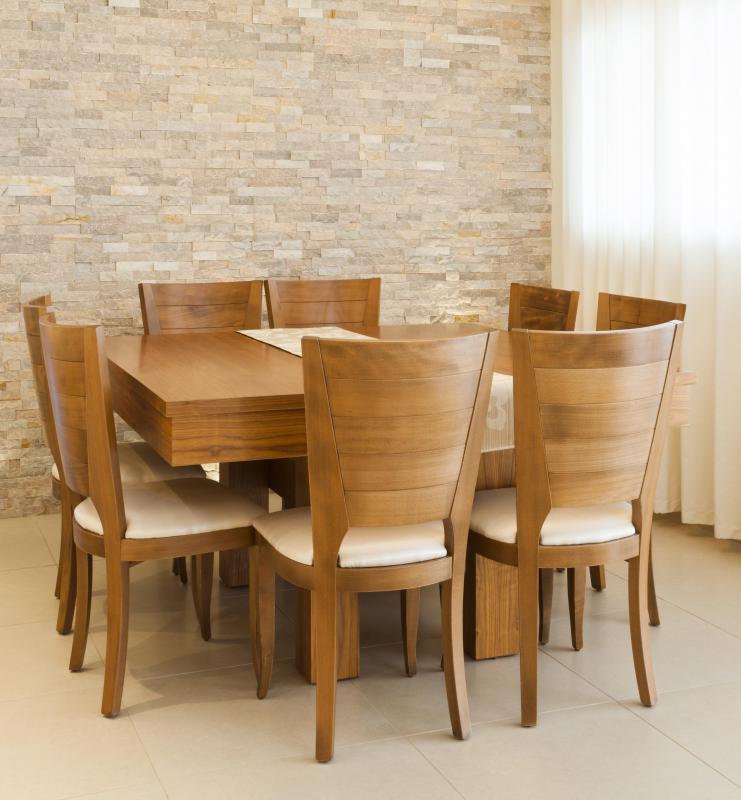At HomeQuestionsAnswered, we're committed to delivering accurate, trustworthy information. Our expert-authored content is rigorously fact-checked and sourced from credible authorities. Discover how we uphold the highest standards in providing you with reliable knowledge.
What is Veneering?
Veneering is the process of affixing two layers of a substance, usually wood, together. Sometimes it is done to make a stronger piece of wood, as in plywood. In other cases, it is to make the surface more beautiful. Very thin pieces of a beautiful or exotic wood are laid over a less beautiful wood to create a more beautiful and expensive-looking product.
When the surface has a complex pattern, the result of veneering is often called marquetry. In the past, this kind of veneering was usually reserved for fine furniture. When metals or exotic materials are used as part of the surface pattern, the veneering is often called inlay.

The earliest examples of veneering are over 5,000 years old, found in the tomb of Semerkhet. Many of the pharaohs were buried with objects that had African ebony veneer and ivory inlays. In the time of the Roman Empire, both Julius Cesar and Cicero owned veneered tables; Cicero's had "veins arranged in waving lines to form spirals like small whirlpools."

When new woodworking tools were developed in the seventeenth century, veneering became more complex, and by the early eighteenth century veneered furniture was popular. Veneering reached an artistic high point in the work of Sheraton and Hepplewhite, two famous furniture makers of the late eighteenth century. Today, their beautiful neoclassical furniture is usually found in museums or private collections.
In the nineteenth century, veneering had a poor reputation. Furniture-making had become a factory operation, especially in America, and the level of craftsmanship had fallen. Veneering was used to cover poor materials and shoddy workmanship. Using veneer was a way to reduce production costs.
Today, veneering is experiencing a new popularity. Equipment and techniques have improved, so high quality veneer can be produced easily. Using wood veneer over man-made substrates reduces the use of wood and can reduce cutting old growth forests. Veneering makes it possible to use exotic wood that has been sustainably harvested, since little wood is needed to complete a project.
AS FEATURED ON:
AS FEATURED ON:












Discuss this Article
Post your comments